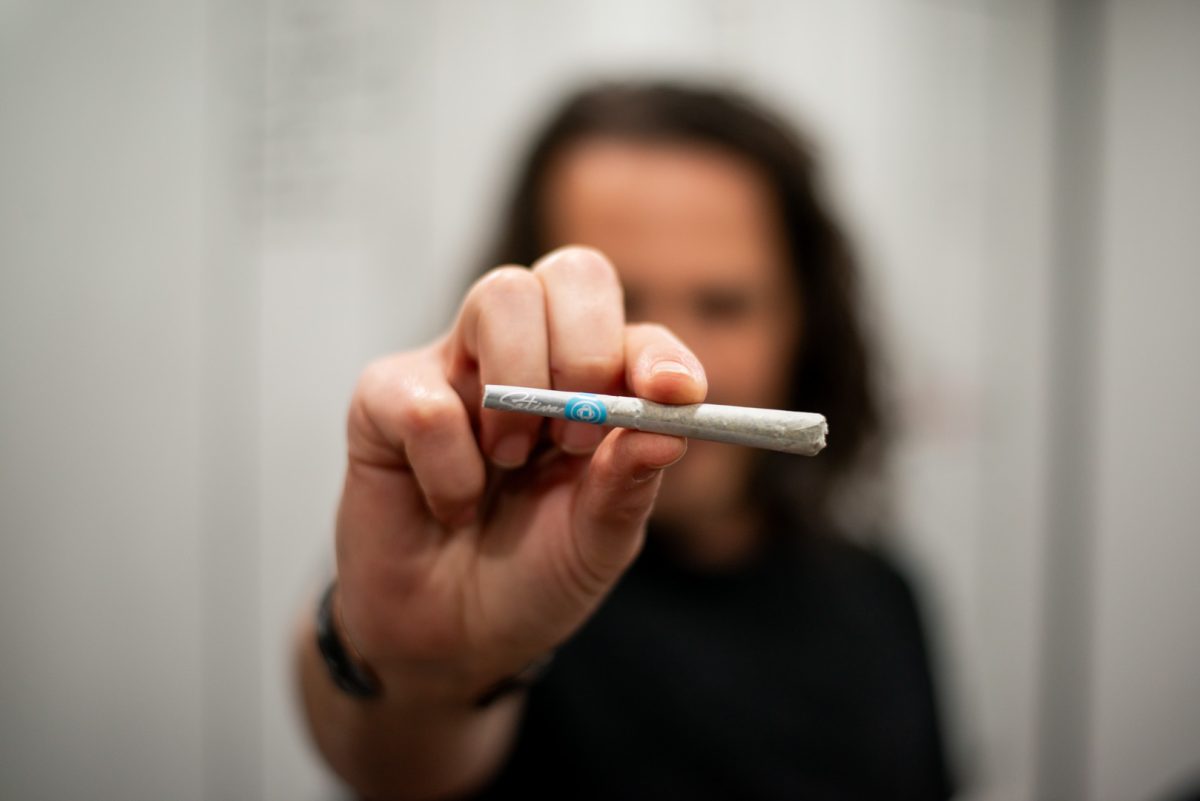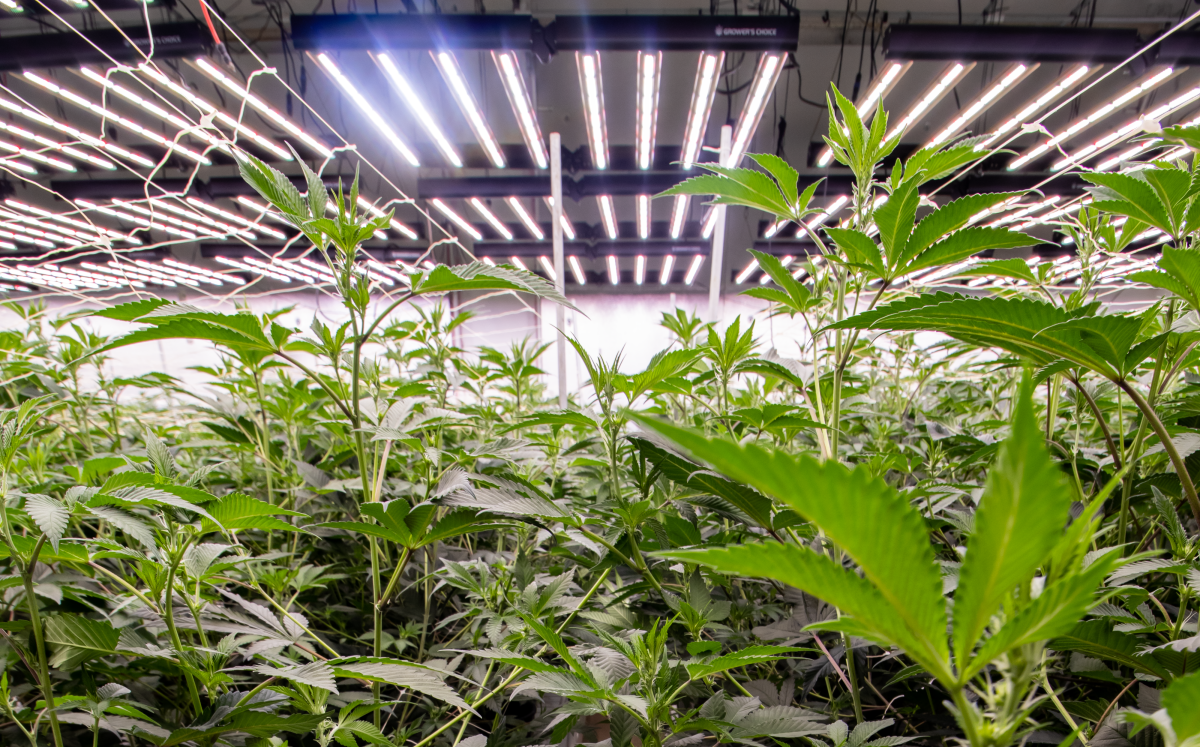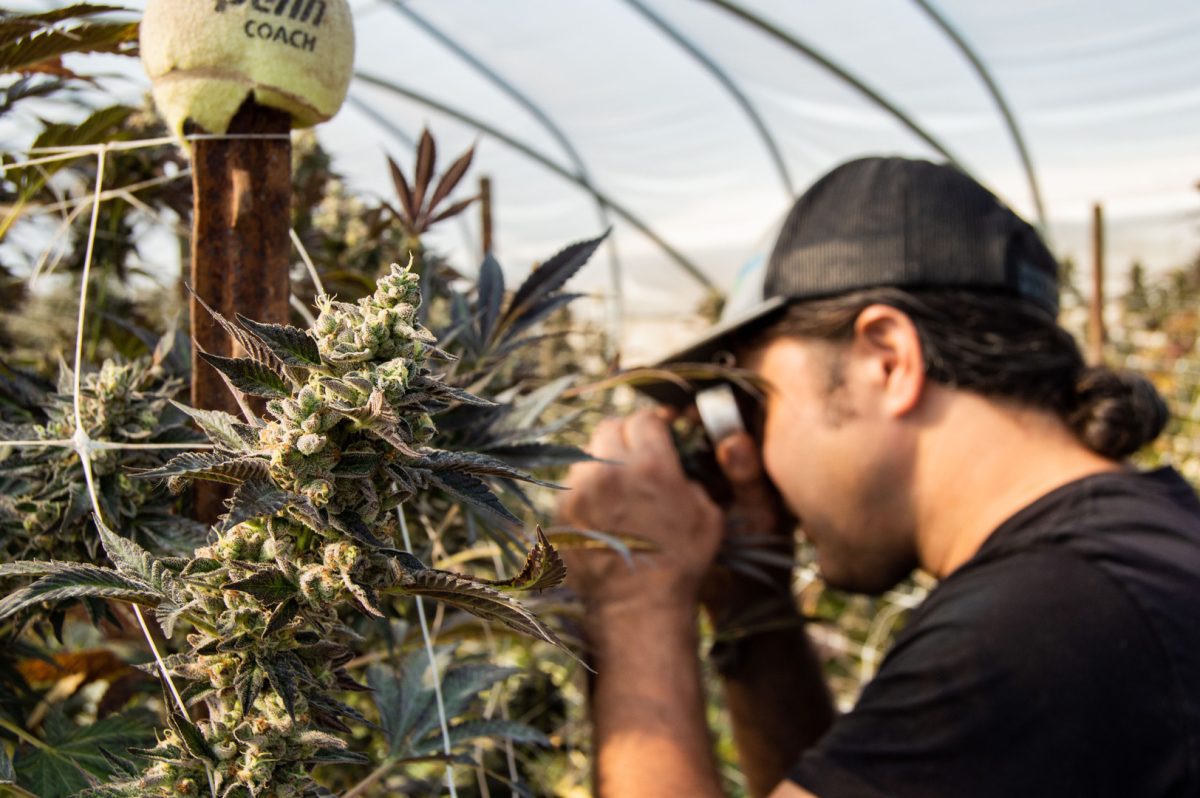Efficiently growing cannabis is down to a science. Farmers have to take everything into consideration; atmospheric conditions, water pH, temperature and light levels all affect the final product. The talented weed growers at Bonsai Farms work hard to make sure the bud that ends up in our bongs is nothing but the finest cannabis.
Bonsai assistant lead grower Nicholas Geist works with the plants every step of the way to ensure they are healthy and clean. For Geist, the first step to growing good ganja is to encourage vegetative growth. He wants his plants to grow stronger roots and taller, thicker stems before flowering can begin.

While the cannabis plants are in “veg,” Geist’s shorthand for vegetative growth room, all 1800 plants will be moved into one-gallon pots to help accentuate a faster growth rate. “It’s always a struggle with how many plants you can fit,” he says.
Bonsai has three veg rooms on their indoor farm. Each room is kept at a similar temperature to spring when cannabis plants have their best vegetative growth. Geist keeps his plants in veg for one to three six-week-long cycles depending on how the plants are growing. However, if kept there for too long, they’ll start to depreciate in value. “If [our plants] get stagnated they inherently lose money,” Geist says.
Farmers are always trying to beat the market. If the market gets flooded with a certain strain, the value of the strain will go down (your basic supply and demand principle). When first potting plants farmers are “making a bet” three months before the plant is even really growing according to Geist.
Bonsai is a unique entity. They are a single source farm, which means they hold all six licenses required for the production and distribution of any kind of weed product, unlike most other farms. It allows Bonsai to stay mobile in a crowded market that is frequently shifting. Each plant grown can be utilized not only for bud but also a variety of hash and distillates.
Once the plants are healthy and ready to begin flowering, they are moved into Bonsai’s flower room for nine weeks. In each of the three seemingly monolithic flower rooms, every plant is kept under the watchful eye of a big black box that houses Bonsai, mounted in the center of each flower room about 15 feet off the ground.
Bonsai uses its own proprietary artificial intelligence, seemingly stored in each black box like HAL 9000, to collect and analyze data on how all of the 400 plants in each room are behaving. The system collates and shares data with the entire farm and monitors each room for humidity, light levels, water quality and air quality.
Each of their three flower rooms is kept homogenous and quarantined. Cross-pollination between two species is a big no-no because it wildly changes the final product. Everything is controlled by Bonsai’s automated system to assure that the taste, smell and color are all up to snuff.

Combined each room uses about 150 kWH of lighting over a 12-hour period to maintain the same level of light each plant would receive during the summer. According to Geist, they even turn the lights off to let plants catch some sleep. The rooms themselves give off the appearance of a cannabis jungle that seems to stretch on for hundreds of feet. It’s truly a beautiful sight.
Throughout the farm, several “Legalize Tomatoes” stickers are placed on various doors. Geist described tomatoes to have an acutely similar growth process to cannabis. According to him, tomato farmers took a look at the indoor cannabis model and have begun applying it to their own greenhouses, such as crossbreeding plants to create new ones that continuously flower.
After each plant has finished flowering, the plants are harvested and bucked. During this dry-trimming process, Bonsai growers work to remove leaves in order to produce a much higher yield of flower. Then the nugs, which are still attached to the stem, are hung out to dry and cure in order to retain a high level of terpenes and cannabinoids for two-and-a-half weeks.
After curing, Bonsai packages it, ready to sell directly to dispensaries around Lane County. Their storage room can hold upwards of 150 to 200 pounds of the pot before it’s shipped off and sold. All of their products were kept in yellow plastic tubs that were stacked up almost 10 feet high. Each tub must have held thousands of nugs. I wanted to dive in and swim around like Scrooge McDuck.
So next time you’re grinding up your nug, just know that a farmer is working very hard to make sure that it’s the stinkiest, greenest, most mind-blowing boof possible.
Editor’s note: as requested by Bonsai, specific strain names are excluded from this piece.







